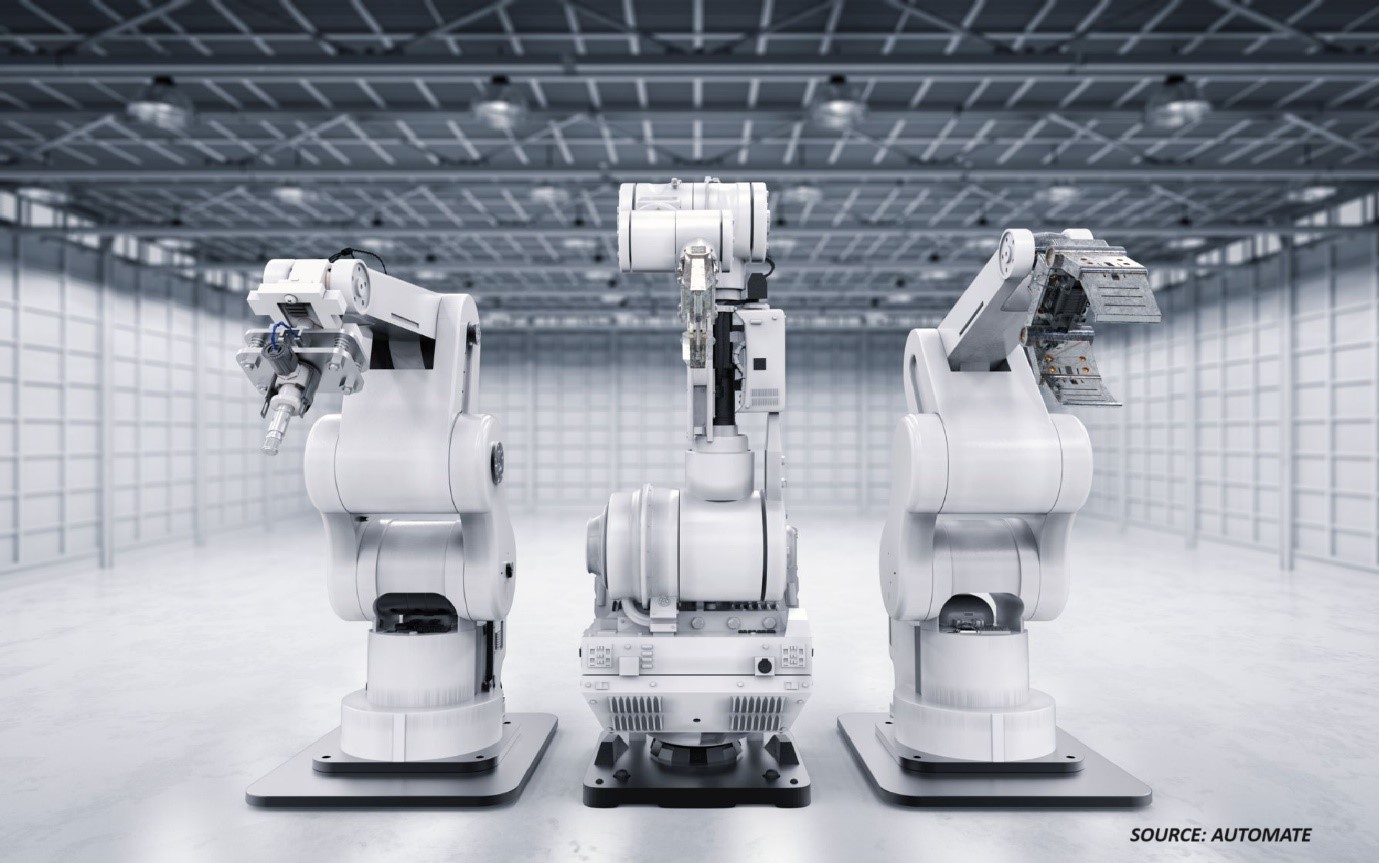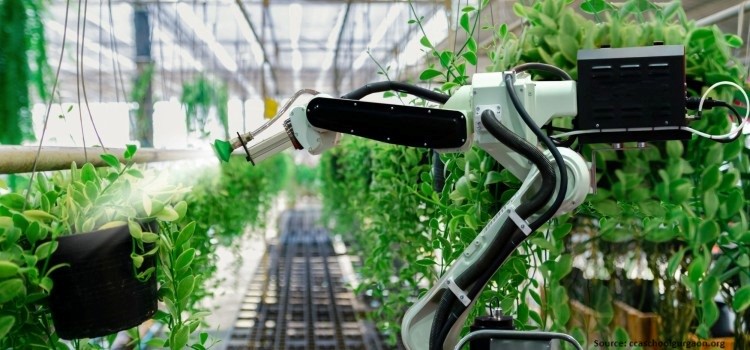
Light-Cargo Robot Market by Type (Automated Guided Vehicles, Autonomous Mobile Robots, Robot Arms, and Others), by Number of Wheels (3 Wheels, 4 Wheels, 6 Wheels), by Payload Capacity (50 kg, 50-100 kg, and Above 100 kg), by Application (Sorting, Pick and Place, Tugging, Warehouse Fleet Management, and Others), and by End User (Warehouse or Distribution Center, Manufacturing, Food & Beverages, Automotive, E-commerce, Retail, Healthcare, Postal, and Others)- Global Opportunity Analysis and Industry Forecast 2024-2030
Market Definition
The Light-Cargo Robot Market size was valued at USD 14.58 billion in 2023 and is predicted to reach USD 85.03 billion by 2030 with a CAGR of 24.7% from 2024-2030.
Light-cargo robot are small, autonomous vehicles designed to transport goods over short distances. These robots are equipped with wheels or tracks for mobility and are typically used in environments such as warehouses, factories, hospitals, and retail stores to transport items such as packages, supplies, or medical equipment. Light robot navigate their surroundings using sensors, cameras, and mapping technology, allowing them to avoid obstacles and navigate through indoor spaces autonomously.
They are often battery-powered and can be programmed to follow predetermined routes or respond to commands from a central control system. Light robot offers a cost-effective and efficient solution for automating repetitive tasks and streamlining logistics operations in various industries. It can help to automate repetitive tasks, improve efficiency and productivity in industrial settings and also reduces the need for human labour. Its flexibility and intelligence features make it adaptable to a wide range of industrial environments.
Market Dynamics and Trends
The expanding e-commerce sector and the demand for streamlined logistics solutions are fueling the expansion of the light-robot market. As per the latest report published by the United Nations Conference on Trade and Development, the global e-commerce sector reached USD 26.7 trillion in 2021, and it is anticipated to grow at a significant rate in the coming years. With such rise in the global e-commerce sector, the demand for robot to automated transportation of goods within warehouses and distribution centers is rising, driving the growth of the market.
Moreover, the rise of Industry 4.0 in logistics and warehousing is driving the growth of the light-robot market as industries increasingly adopt automation. With the rising adoption of advanced automation technologies and robotics, the demand for light robot in industrial settings to enhance operational efficiency and accuracy is rising, further boosting the growth of the market.
However, the high initial cost of purchasing and implementing light-cargo robot are the major factor restraining the growth of the market. On the contrary, the integration of artificial intelligence (AI) into light robots is poised to generate significant opportunities in the light cargo delivery market in the coming years.
This AI integration is anticipated to empower light-cargo robots to handle more complex tasks, including picking and packing products. Moreover, they will be capable of understanding and interpreting their surroundings, identifying and locating objects, and making decisions based on this information. These advancements will enhance the efficiency and effectiveness of light-cargo delivery operations.
Market Segmentations and Scope of the Study
The light-robot market share is segmented on the basis of type, number of wheels, payload capacity, application, end user, and region. On the basis of type, the market is divided into automated guided vehicles, autonomous mobile robots, robot arms, and others. On the basis of the number of wheels, the market is classified into 3 wheels, 4 wheels, and 6 wheels. On the basis of payload capacity, the market is segmented into 50 kg, 50-100 kg, and above 100 kg. On the basis of application, the market is classified into sorting, pick and place, tugging, warehouse fleet management, and others. On the basis of end-user, the market is divided into warehouse or distribution center, manufacturing, food & beverages, automotive, e-commerce, retail, healthcare, postal, and others. Regional breakdown and analysis of each of the aforesaid segments include regions comprising of North America, Europe, Asia-Pacific, and RoW.
Geographical Analysis
Asia Pacific holds the dominant share of the light-cargo robot market and is expected to continue its dominance during the forecast period. This is attributed to factors such as the rapidly growing e-commerce industry and the increasing use of robots in warehouses and distribution centers to carry and stack up goods.
According to the World Economic Forum, China is the biggest e-commerce market in the world, and as e-commerce sales in China reached USD 1.3 trillion in 2020 and it is expected to reach USD 2 trillion by 2025. This surge in e-commerce activity is propelling the demand for light-cargo robots in the region.
Moreover, the growing automotive industry in this region is further driving the growth of the light-cargo robot market in this region. According to the Ministry of Industry and Information Technology, China is the largest automotive manufacturing country in the world with a sale of 25 million vehicles in 2020 and it is expected to reach 35 million vehicles by 2025. With such rise in the automotive sector, the demand for light-robot in the automotive industry is poised to rise.
On the other hand, North America is expected to show a steady growth in the light cargo robot market due to the growing food industry and the use of robots for tasks such as packaging, palletizing, and inspection with a high degree of accuracy is driving the growth of the market. According to the U.S. Department of Agriculture, the food service industries in the US such as full-service restaurants, fast-food outlets, caterers, and other food retail sales reached USD 2.12 trillion.
Moreover, the growing manufacturing industry and the increasing usage of light robot in manufacturing operations to reduce labor costs by performing tasks such as transportation, assembly, and quality inspections is driving the growth of the market. According to the National Institute of Standards and Technology and the US Department of Commerce, manufacturing industries reached USD 2.3 trillion, contributing 12.0 % of the total U.S. GDP in 2021.
Competitive Landscape
Various market players operating in the light-robot market include ABB Ltd, Fanuc Corporation, KUKA AG, Toyota Industries Corporation, Yaskawa Electric Corporation, Hyundai Motor Group, Toshiba Corporation, Piaggio Fast Forward, Kawasaki Heavy Industries Ltd, Omron Corporation, and others. These market players are adopting product launches to remain dominant in the light-cargo robot market.
For instance, in September 2021, Piaggio Fast Forward launched a Gitamini robot range. The robot consisted of two large wheels, a central trunk, built-in Bluetooth speakers, and a machine vision system used to identify and follow its owner.
Moreover, in February 2021, Hyundai Motor Group launched a cargo-carrying robot car. The new walking car robot was capable of using its wheels to roll along a path or stand up and navigate tougher terrain. Furthermore, in August 2022, Yaskawa Electric Corporation launched the Motoman-HC30PL robot for light cargo transport. This new robot could carry a payload capacity of 30 kg and provides safe and secure transfer of products.
Key Benefits
-
The report provides quantitative analysis and estimations of in light-robot market from 2024 to 2030, which assists in identifying the prevailing market opportunities.
-
The study comprises a deep dive analysis of the light-robot market including the current and future trends to depict prevalent investment pockets in the market.
-
Information related to key drivers, restraints, and opportunities and their impact on the light-robot market is provided in the report.
-
Competitive analysis of the players, along with their market share is provided in the report.
-
SWOT analysis and Porters Five Forces model is elaborated in the study.
-
Value chain analysis in the market study provides a clear picture of roles of stakeholders.
Key Market Segments
By Type
-
Automated Guided Vehicles
-
Autonomous Mobile Robots
-
Robot Arms
-
Others
By Number of Wheels
-
3 Wheels
-
4 Wheels
-
6 Wheels
By Payload Capacity
-
50 kg
-
50-100 kg
-
above 100 kg
By Application
-
Sorting
-
Pick and Place
-
Tugging
-
Warehouse Fleet Management
-
Others
By End User
-
Warehouse or Distribution Center
-
Manufacturing
-
Food & Beverages
-
Automotive
-
E-commerce
-
Retail
-
Healthcare
-
Postal
-
Others
By Region
-
North America
-
The U.S.
-
Canada
-
Mexico
-
-
Europe
-
The UK
-
Germany
-
France
-
Italy
-
Spain
-
Denmark
-
Netherlands
-
Finland
-
Sweden
-
Norway
-
Russia
-
Rest of Europe
-
-
Asia Pacific
-
China
-
Japan
-
India
-
South Korea
-
Australia
-
Indonesia
-
Singapore
-
Taiwan
-
Thailand
-
Rest of Asia Pacific
-
-
RoW
-
Latin America
-
Middle East
-
Africa
-
REPORT SCOPE AND SEGMENTATION:
|
Parameters |
Details |
|
Market Size in 2023 |
USD 14.58 Billion |
|
Revenue Forecast in 2030 |
USD 85.03 Billion |
|
Growth Rate |
CAGR of 24.7% from 2024 to 2030 |
|
Analysis Period |
2023–2030 |
|
Base Year Considered |
2023 |
|
Forecast Period |
2024–2030 |
|
Market Size Estimation |
Billion (USD) |
|
Growth Factors |
|
|
Countries Covered |
28 |
|
Companies Profiled |
10 |
|
Market Share |
Available for 10 companies |
|
Customization Scope |
Free customization (equivalent up to 80 working hours of analysts) after purchase. Addition or alteration to country, regional, and segment scope. |
|
Pricing and Purchase Options |
Avail customized purchase options to meet your exact research needs. |
KEY PLAYERS
-
ABB Ltd.
-
Fanuc Corporation
-
KUKA AG
-
Toyota Industries Corporation
-
Yaskawa Electric Corporation
-
Hyundai Motor Group
-
Toshiba Corporation
-
Piaggio Fast Forward
-
Kawasaki Heavy Industries Ltd.
-
Omron Corporation




 Speak to Our Analyst
Speak to Our Analyst


































